
This HSB workshop will take place during the Offshore Energy exhibition at the RAI complex in Amsterdam. As usual,
access is free. In addition to the HSB members, your guests and interested visitors to the exhibition floor are
also welcome.
In order to keep the logistics financially under control, a maximum of 100 participants has been set. Make sure
that you register in time.
HSB members register as usual via the registration button above this page, so that we know how many members of the
HSB participate (important in relation to prioritization when assigning chairs).
It is also necessary to register for the Offshore Energy 2018 exhibition itself. Select "New visitor or delegate"
when registering. You can choose the HSB workshop in step 3 (a side event on 24 October). Without registering with
OE-2018, you can not enter the exhibition floor. Click on this link to register for OE-2018.

To facilitate organising workshops by HSB financial support by sponsors is welcome e.g. by sponsoring the social drinks at this workshop. Ample publicity will be given to the sponsor.
On behalf of the Hydrographic Society Benelux I look forward to meeting you all on the 24th of October 2018.
Leeke van der Poel
Chairman of Hydrographic Society Benelux
The program of this afternoon:
14:00 – 14.30 Walk in
14.30 – 14.35 Opening and Welcome address by Leeke van der Poel (Chair HSB)
14.35 – 15.35 Presentations 1
15.35 – 16.05 Break Coffee/Tea
16.05 – 17.05 Presentations 2
17.05 – 18.00 Drinks and Networking
NB: 09.30 – 14:00 Possibility to visit the exhibition.
Below an overview of the presentations:
1. Fishery and bottom related obstacles on the Northsea.
by Mr. Rob Lambij (worked at the Ministry of Waterworks, Directorate of the North sea and co-founder of the Foundation “wet” archeological projects(SNAP)).
An estimated number of 10.000 objects/obstructions e.g. ship wrecks, ammunition, lost cargo, ships anchors, oil and gas pipelines and electricity and telecom cables are lying on or in the bottom of the Netherlands Continental Shelf. Offshore pipelines with a diameter < 16 inch and telecom and electricity cables have to laid on a government prescribed depth below the seabed.
Caused by the mobility of the North sea bottom the cables and pipelines frequently become uncovered. Particularly “free lying”-cables can be damaged by fishing gear with possible cable break or rupture. These “free lying” telecom and electricity cables will be discussed in particular.
2. The process of a cable repair project.
By Mr Reinier Nagtegaal (CEO - ECE Offshore).
The amount of offshore wind farm cable repairs have significantly increased over the last years. As cable faults generally come unexpected, the time pressure for these projects is extremely high and the available means are limited. Reinier Nagtegaal will explain the process of a cable repair project starting at fault detection and ending at the installation of the repair joint and new cable at the fault location.
3. Hydrographic support for installation and maintenance of
windfarms: a solution.
By Mr. Bart van Mierlo (CEO - Periplus Group).
For the construction and maintenance of offshore windfarms an enormous amount of hydrographic and geophysical data are collected. Different stakeholders might have different objectives and are individually responsible for the collection of new data or at least the interpretation of existing data. The owner is paying for this but based on our experience has only limited access to these data.
A centrally organized data repository would save time and money, but does not exist. By providing access to these data all parties would benefit while working with the same information. With the GR:Dit platform Periplus provides a solution. This web-based application will provide up-to-date information of the windfarm area. Combined with our in-house developed inspection data tool the owner has a complete overview of the status of the windfarm.
4. Scour protection: maintenance and more.
By Mike Lycke (Survey Offshore Manager – Jan De Nul Group).
Jan De Nul Group is as an offshore contractor often responsible for the installation of the scour protection around offshore structures; such as monopiles, gravity base structures... Nowadays the requirement also arises to maintain the scour protection. This session will explain the role and challenges of the Jan De Nul survey department during maintenance work at the scour protection of offshore structures.
One of the major challenges is the vessel positioning around the structures. In order to install scour protection in close proximity of the structure it is very important to have very reliable and fully redundant DP and survey system.
A second challenge is to monitor the installation process efficiently with the installation vessel. Furthermore, we also want to deliver a survey deliverable, created from the installation vessel, to our client to show the performed works and provide them with a new baseline for future maintenance monitoring.